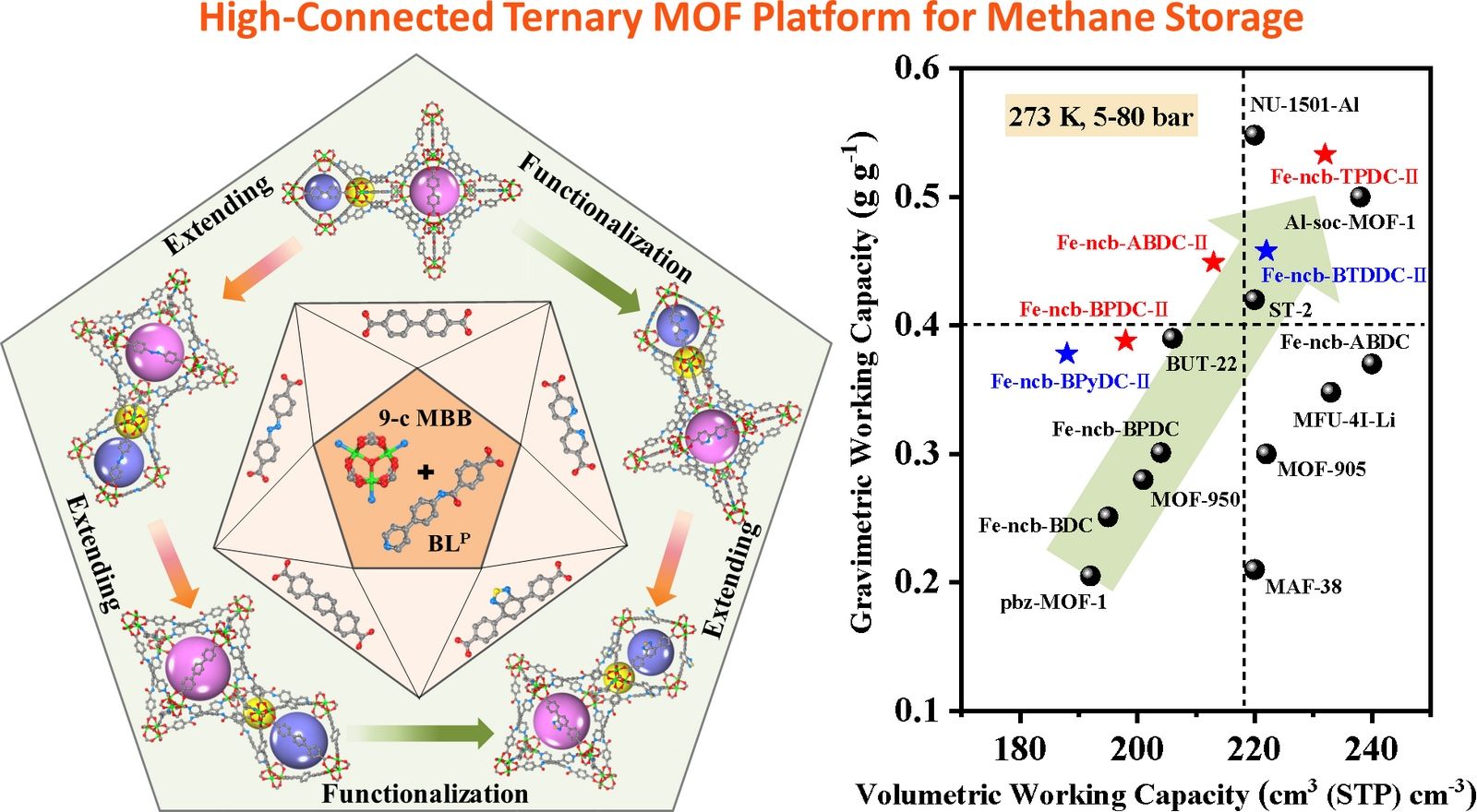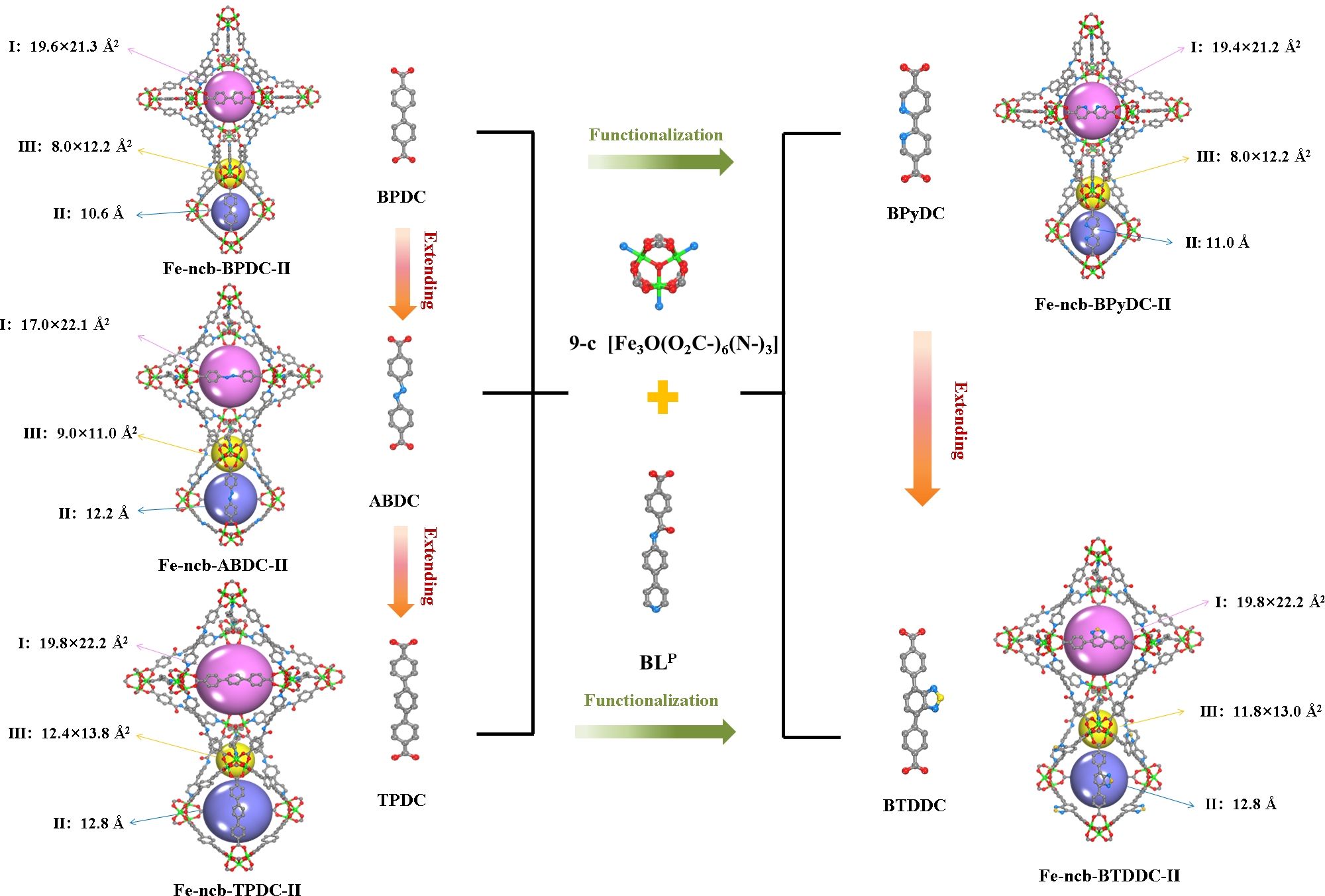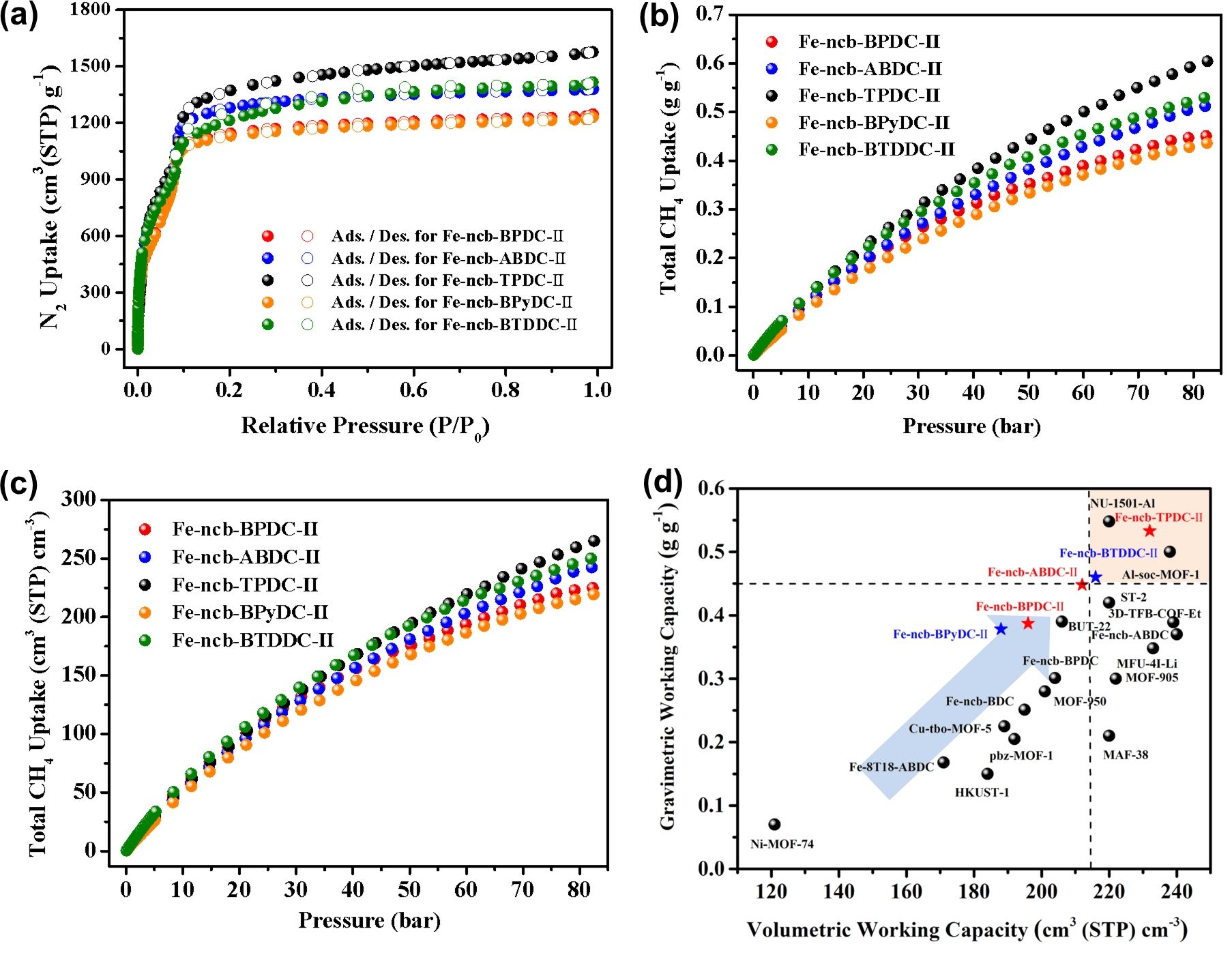
Jie Zhou, Ya-Nan Ma, Yu-Feng Zhang, Bin Zheng, Ke Zheng, Shan Liu, Xin-Ai Guo, Yue-Biao Zhang, and Dong-Xu Xue*. J. Am. Chem. Soc. 2025, ASAP. DOI: https://doi.org/10.1021/jacs.5c04567.

The design and synthesis of a single metal-organic framework (MOF) that simultaneously achieve high gravimetric and volumetric working capacities for methane storage is crucial for advancing the use of natural gas as a vehicular fuel. However, this presents a significant challenge due to the inherent trade-off effect between the gravimetric and volumetric total methane adsorption capacities of a single porous material. High-connected ternary MOF structures often exhibit slower crystal density reduction during isoreticular expansion, resulting in higher gravimetric and volumetric surface areas, thus holding promise to attain both high gravimetric and volumetric total methane adsorption capacities.

Figure 1. Schematic representation showing the construction of 9-c ncb MOF platform.

Figure 2. (a) N2 sorption isotherms, (b) total gravimetric and (c) volumetric methane adsorption isotherms at 273 K, and (d) comparison of the gravimetric and volumetric methane storge working capacities at 80 bar and 273 K for the five Fe-ncb-MOFs-II with some top-performing porous materials.
In this study, we initially synthesized a novel pyridine-carboxylic acid ligand and combined it with a trimeric iron cluster along with a series of dicarboxylic acid ligands of varying lengths or functionalities. Employing a dual-solvent system and dual-modulator solvothermal principles, we successfully constructed a 9-c ternary MOF platform. The structures of five prepared MOF materials were analyzed using single-crystal X-ray diffraction technique, revealing that they all feature a ncb-type topological network with a cage-channel biporous hierarchy and do not contain open metal sites.
Through a multi-step solvent exchange followed by supercritical carbon dioxide drying method, we successfully activated this series of materials, achieving substantial porosity, with pore volumes exceeding 1.90 cm³ g⁻¹, gravimetric surface areas surpassing 4800 m² g⁻¹, and volumetric surface areas greater than 1600 m² cm⁻³. High-pressure methane adsorption tests at 80 bar demonstrated that the series of materials exhibited high total gravimetric and volumetric methane adsorption capacity. Notably, when the testing temperature was lowered to 273 K, these materials showed significant increases in total gravimetric and volumetric methane adsorption. Particularly, the Fe-ncb-TPDC-II constructed using the longest dicarboxylate linker achieved gravimetric and volumetric methane storage working capacities of 0.533 g g⁻¹ and 232 cm³ (STP) cm⁻³, respectively, performing exceptionally well compared to reported porous materials under similar conditions. This study provides new insights into the preparation of efficient NG storage materials.
First Author: Zhou Jie, Master’s student, Shaanxi Normal University
Correspondence Author: Prof. Xue Dongxu, Shaanxi Normal University
Full Text Link: https://doi.org/10.1021/jacs.5c04567